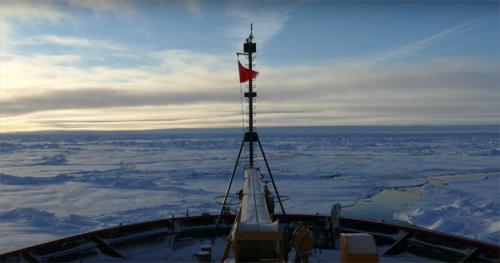TODAY’S JOURNAL:
I’m happy to say that I’m about adjusted back to “real” life, at least as much as I ever am. I still have a box of stuff on the way that I mailed from Dutch Harbor but otherwise the signs of my long expedition have vanished from home. For scientists there is one more step to accomplish on Healy- unloading all of their gear and shipping it home from Seattle once the icebreaker returns to port next week. School is busy as always but a bit crazy this week and last with the addition of parent-teacher conferences to an already hectic world. I’m really enjoying getting to know my students and proud of their progress in Earth Science with a quarter of the school year already done!
One of the jobs I had left from the trip was to upload the many videos that I made to PolarTREC’s YouTube channel. I couldn’t do this on the expedition because our ship-board internet bandwidth was too limited for multimedia sites like YouTube. If you want to browse some movies, you can find them under the “recent activity” section of PolarTREC’s YouTube channel.
In today’s journal I’d like to highlight a few videos featuring ice breaking. It is kind of amazing to be on a ship that can steadily crunch its way through thick polar ice, and I tried to capture the experience at least a little bit in these three movies:
 USCGC Healy ICEBREAKING ~86°N, 150°W
USCGC Healy ICEBREAKING ~86°N, 150°W
1) I took the footage for this video on 13 September 2015 in some very continuous, thick ice at about 86°N, 150° W. Even this far north and in ice this extensive there are some open leads, caused by ice drifting apart. Our navigators tried to find and follow these leads whenever possible to make the way easier, so we likely saw more open water than a random course would have revealed.
2) This video was shot on the same day using a time lapse camera that I mounted near the bow. It represents about 6 hours of travel through the ice, arriving at a large open lead at the end where we stopped for a water sampling station. Note the many times we had to back and ram to get through tough spots (usually caused by thicker ice along pressure ridges.)
3) The last video I’ll feature today focuses on the noise and shaking that happens in the ship while we are breaking ice. It is loudest on decks nearest the water. In particularly tough ice it felt like we were in an earthquake lasting days at a time. To illustrate this I used a mobile app called Seismometer to help visualize the shaking along with the crunching sounds.
That's all for now. Best- Bill
 Ice Breaking Video Screen Shot
Ice Breaking Video Screen Shot
